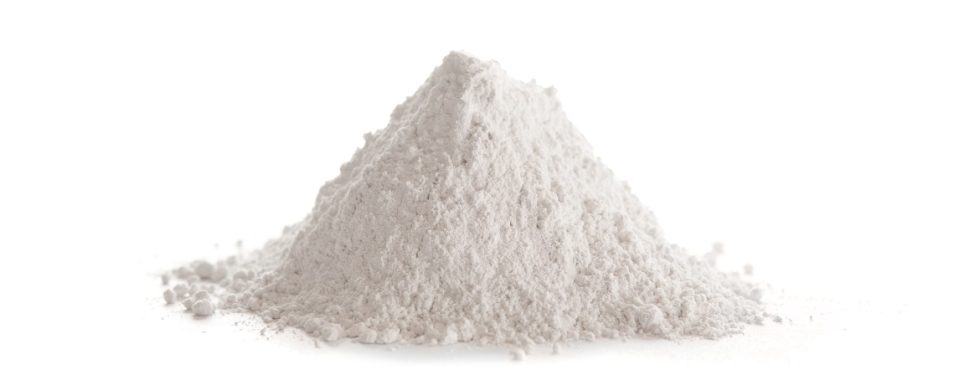Using gypsum as a soil amendment
What is gypsum?
Gypsum is a naturally occurring di-hydrated calcium sulfate mineral, chemically represented as CaSO4.2H2O. This mineral dissolves in water and is found deposited below the earth’s surface in as a rock. Therefore, gypsum has to be extracted through mining to be used as a soil conditioner, fertilizer, or amendment, among other commercial uses.
What is gypsum used for in agriculture?
Gypsum has a wide range of uses as a soil amendment uses, including:
- Boosting plant nutrition
- Enhancing soil structure
- Reclaiming sodic soil
- Lowering aluminum toxicity
Boosting plant nutrition
In calcium or sulfur deficient soils, gypsum is always a remarkable source of these two minerals . Pure gypsum consists of 23.3% calcium and 18.6% sulfur. These essential plant nutrients play a key role in plant nutrition. Calcium enables plants to have a well-developed root system, cell membranes/walls, and functions as a catalyst for enzymatic activities. Sulfur is helpful in chlorophyll and amino acid formation in plants. Interestingly, gypsum does not alter the pH of the soil (it is not a liming agent). This makes it a great alternative to lime where calcium is needed but the soil pH is adequate.
Improving soil structure
Soil structure affects aeration, erosion, root penetration, and seed germination. The application of gypsum amends soil aggregation which, in return, promotes seed sprouting, root penetration, and aeration. In addition, gypsum’s solubility promotes soil porosity which enhances water infiltration. Also, the application of gypsum enables fibrous root crops such as wheat and corn to root deeper and better absorb nutrients.
How does gypsum help reclaiming sodic soils?
Sodicity refers to the presence of high levels of exchangeable sodium ions. High sodicity causes degradation of soil structure. Sodic soils are prone to erosion, dispersion, and runoffs thus affecting agricultural activities. Adding gypsum to the salt-affected soils provides an inexpensive yet effective way of soil reclamation.
The sodicity level is defined by a parameter called ESP (Exchangeable Sodium Percentage), which is the amount of sodium adsorbed to soil particles, expressed as a percentage of the Cation Exchange Capacity. ESP = Exchangeable Na / CEC X 100
Where both exchangeable Na and CEC are expressed in units of meq/100g.
Sodic soils have an ESP value >15.
The reclamation process of sodic soils can take years. It involves the application of soil amendments, such as gypsum or acid forming amendments.
The purpose of adding gypsum is to replace the adsorbed sodium with calcium and improve soil structure, as adsorbed calcium ions promote particle aggregation and stable soil structure. Only after applying gypsum, sodium can be leached out of the soil, using good quality water.
Attempting to leach the sodium before it is replaced with calcium will result in further damage to soil structure. This is because salts will leach out of the soil profile, while sodium remains adsorbed to soil particles. The reduced salinity may, therefore, cause soil dispersion.
Small, repeated applications of gypsum are preferred over one large application.
The reactions that take place upon the application of soil amendments to recover sodic soils:
Na-Soil + H2O + CaSO4•2H2O → Ca-Soil + Na2SO4 + H2O
How much gypsum to apply?
The amount of gypsum to apply can be calculated using the following equation:
Gypsum to apply (tonnes/ha) = [8.61 x (ESPa – ESPt) X CEC X D X BD)] / (1,000 X e)
Where:
ESPa = Actual ESP of the soil
ESPt = Target ESP
CEC = Cation Exchange Capacity of the soil (meq/100g)
D = Depth of soil layer for which reclamation is required (m)
Db = Bulk density of the soil (kg/m3)
e = Gypsum application efficiency (%)
Gypsum helps alleviating aluminum toxicity
Aluminum toxicity is a major concern in crop production. When soil pH drops below 5.0, Aluminum ions (Al3+) are released to the soil solution. The ions permeate the root tip and inhibit root growth and development. Consequently, this inhibition decreases water and nutrient absorption hindering plant growth. Applying gypsum in acidic soil won’t neutralize the acidity, but calcium ions will replace the aluminum ions, hence lowering its toxicity.



